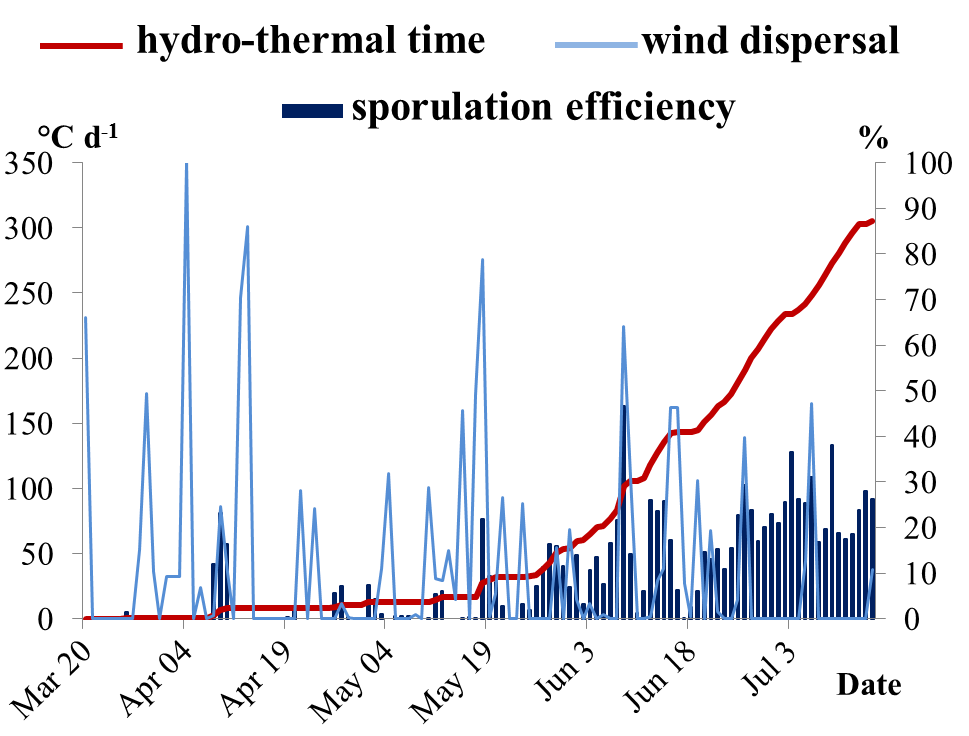The time of the disease onset is estimated as a function of the accumulation of hydro-thermal time, as done e.g., by Arai and Yoshino (1987), Lovell et al. (2004) and Rossi et al. (2008).
The model is run with an hourly time step and can be parameterized according to the different pathogens moisture and thermal requirements. Each time step, a progress rate of the primary inoculum formation is computed (IPrate, °C h-1) as:

where Th= hourly air temperature (°C), Tmin is the minimum temperature threshold for inoculum formation (°C), Tmax is the maximum temperature threshold for inoculum formation (°C), Topt is the optimum temperature threshold for inoculum formation (°C), RH is the hourly air relative humidity (%, equation from Yan and Hunt, 1999) and RHt is the air relative humidity threshold below which no IPrate is computed (%, Kim, 2000; Schoeny et al., 2007).
Daily IPstate,d (°C d-1) is then computed according to the equation below, and accumulated from the day of harvest of the previous cropping season, or from the day of sowing.

The day of disease onset (DOYonset) is determined as the day when the primary inoculum formation (IPstate, °C d-1) reaches a pathogen specific hydro-thermal time requirement (HyTht, °C d-1).

A sample simulation showing the accumulation of hydro-thermal time and sporulation and wind dispersal efficiency from sowing to disease onset is shown below.

Accumulation of hydro-thermal time (red line) and efficiency of spore wind
dispersal (light blue) and sporulation (blue histograms)in a sample simulation.
Created with the Personal Edition of HelpNDoc: Free EPub producer